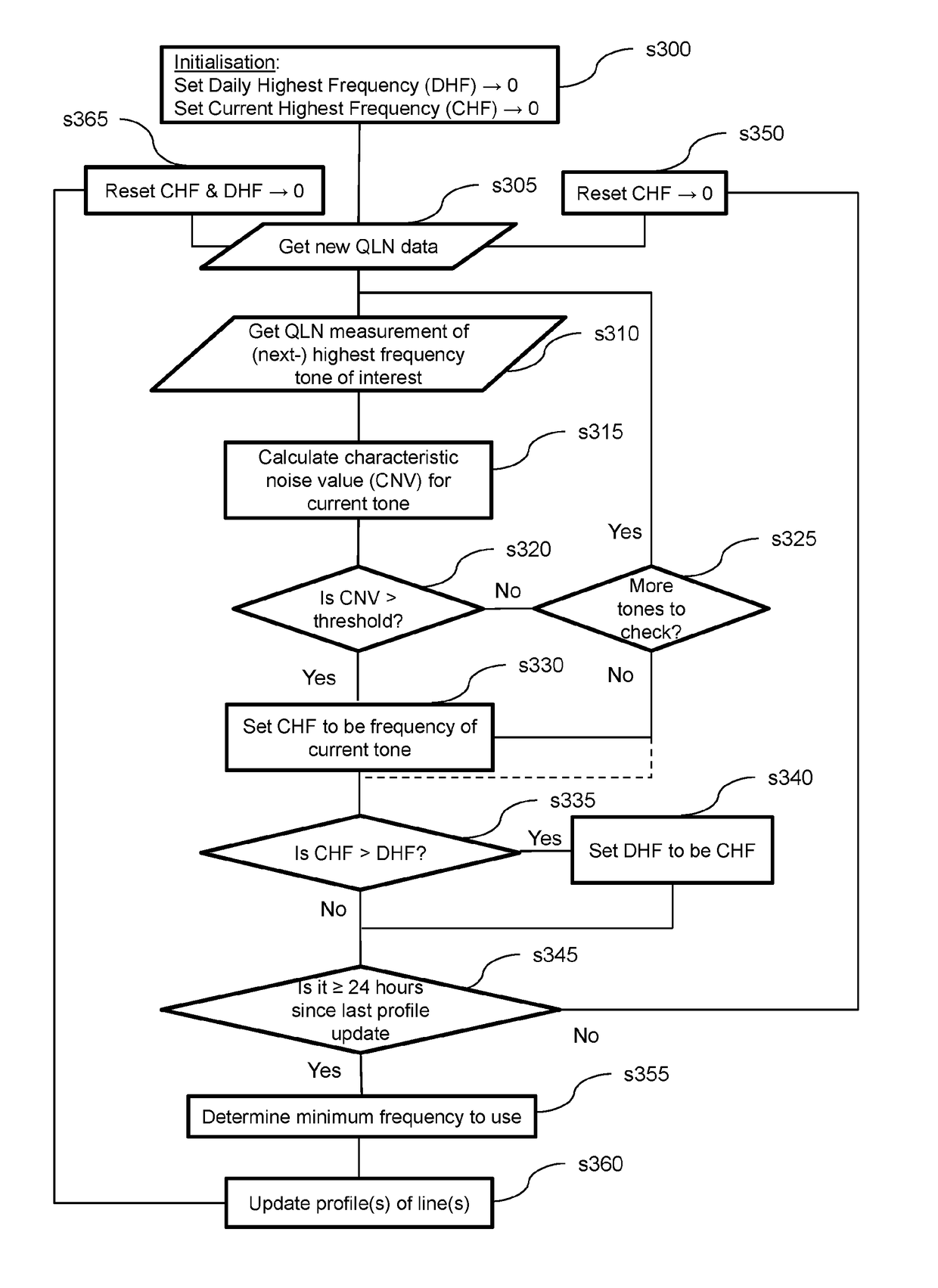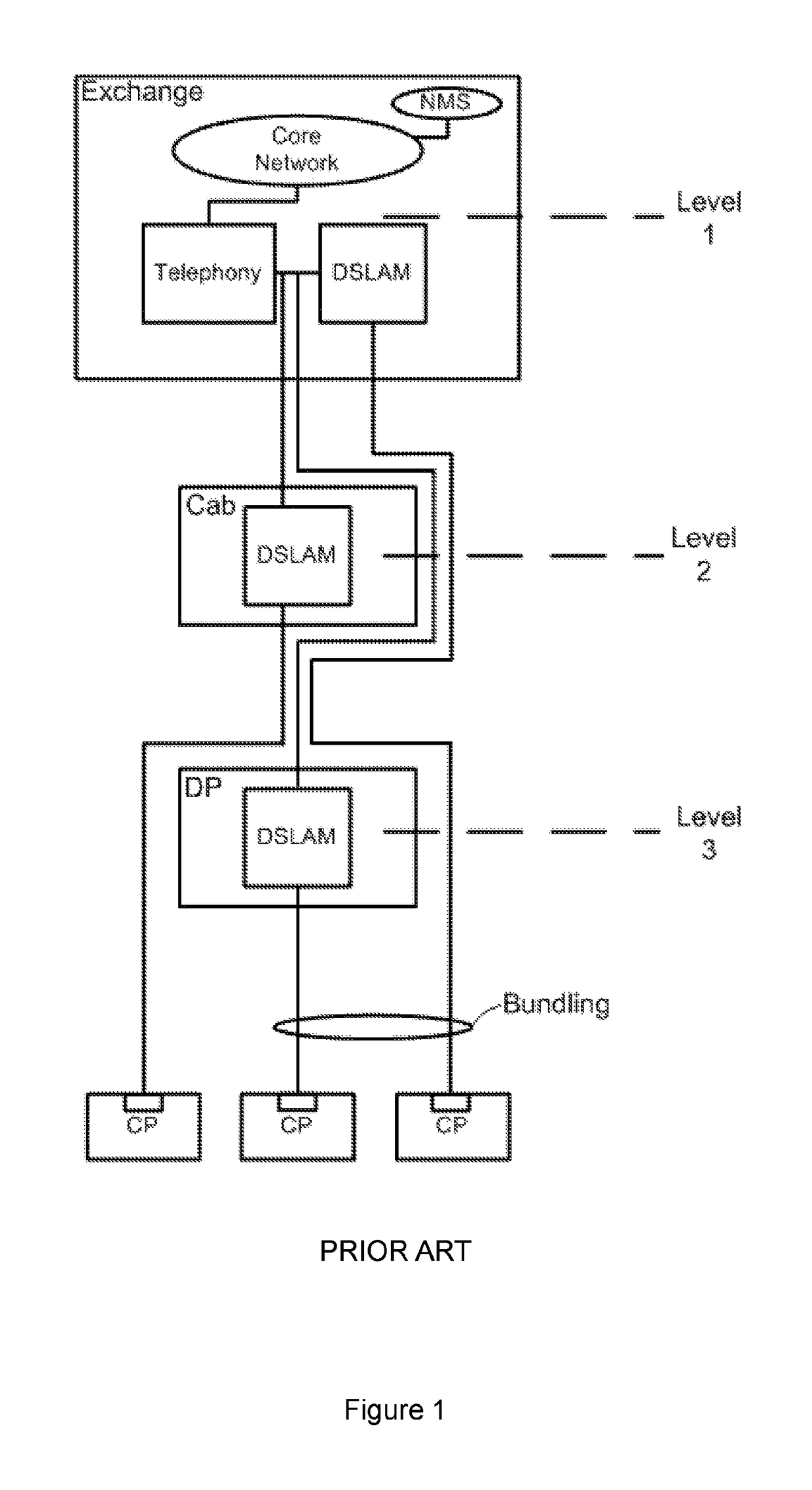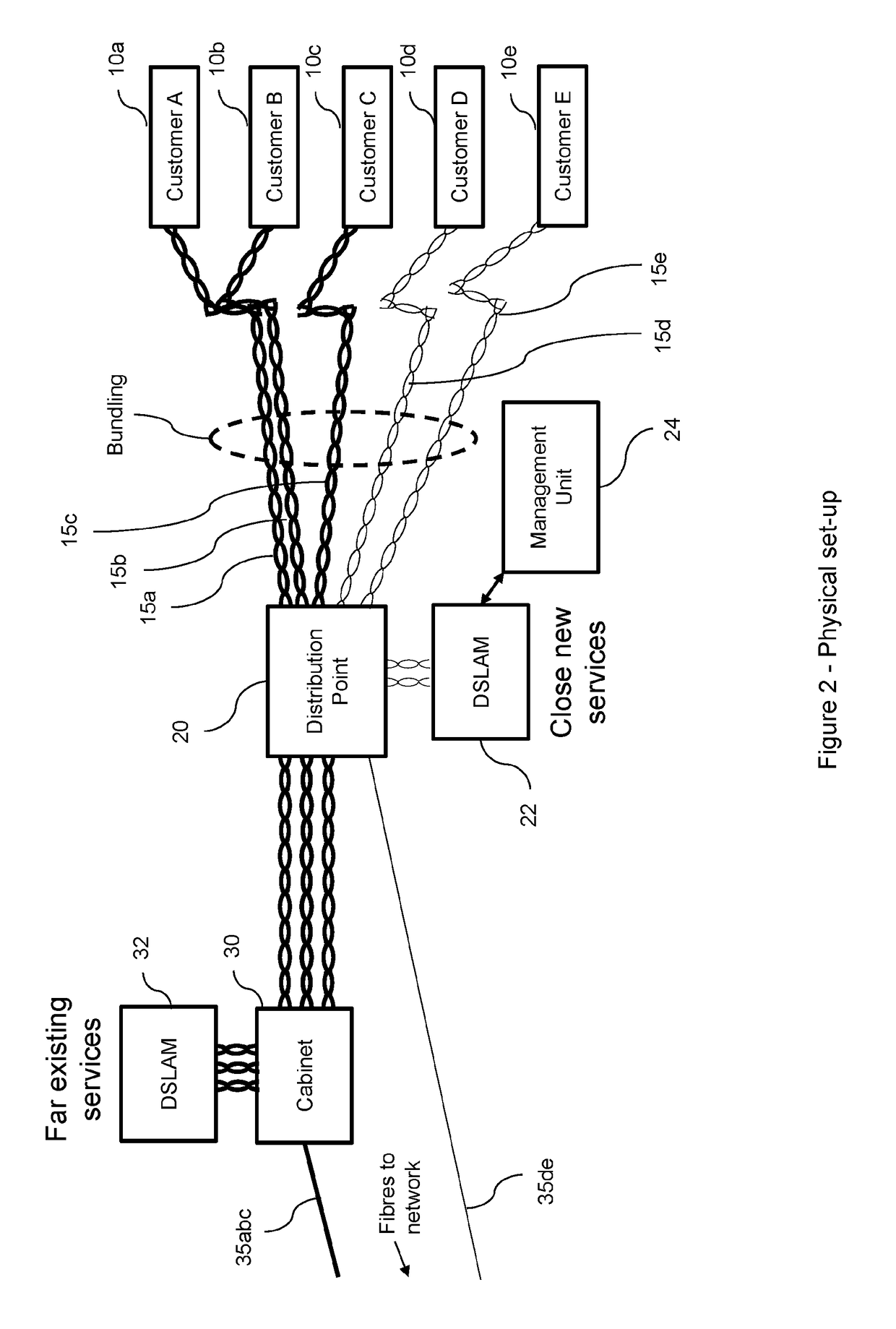Resource allocation in a digital communication network
- Summary
- Abstract
- Description
- Claims
- Application Information
AI Technical Summary
Benefits of technology
Problems solved by technology
Method used
Image
Examples
Embodiment Construction
[0045]With reference to the accompanying figures, methods and apparatus for performing a resource allocation process according to a preferred embodiment will be described.
[0046]Briefly, FIG. 2 shows a physical network set-up in which customers (generally, 10) receive communications services via respective copper-pair lines 15. These services are provided via two different nodes, which in this example are shown as a distribution point 20 (located relatively near to the customers 10) and a street cabinet 30 (located further away from the customers 10). These nodes are in communication (via respective fibre connections 35) with the Core Network via an Exchange (not shown).
[0047]Of the five customers shown, two customers, shown as Customer D (10d) and Customer E (10e), are shown as receiving their communications services via a new, close (i.e. short-range), high-frequency (and generally faster) service such as G.fast, while three other customers, Customer A (10a), Customer B (10b) and C...
PUM
 Login to View More
Login to View More Abstract
Description
Claims
Application Information
 Login to View More
Login to View More - R&D
- Intellectual Property
- Life Sciences
- Materials
- Tech Scout
- Unparalleled Data Quality
- Higher Quality Content
- 60% Fewer Hallucinations
Browse by: Latest US Patents, China's latest patents, Technical Efficacy Thesaurus, Application Domain, Technology Topic, Popular Technical Reports.
© 2025 PatSnap. All rights reserved.Legal|Privacy policy|Modern Slavery Act Transparency Statement|Sitemap|About US| Contact US: help@patsnap.com



